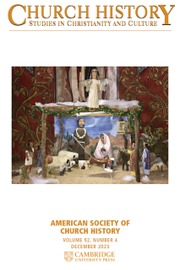Painstaking textual scholars seldom bequeath rip-roaring memoirs. Even in the “Bible Civilization” of nineteenth-century Europe and North America, it was manuscript- and antiquity-hunters like Austen Henry Layard or Constantin von Tischendorf or the “Sisters of Sinai,” Agnes Smith and Margaret Gibson, who hogged the limelight. To be sure, the remarkable autodidact and oriental linguist Samuel Lee caught the attention of Samuel Smiles, who commended his doughty perseverance in Self-Help (1859). But while figures like B.F. Westcott or Albert Schweitzer were known to the cognoscenti, they were hardly household names: their lives were far less important than their work. This neglect has, if anything, intensified in the modern academy, for although religion has in recent decades come to be seen as central to all aspects of early modern Europe, it still seems to matter less to those working on the nineteenth and twentieth centuries. Added to this, the history of biblical scholarship falls into the cracks between disciplines: intellectual historians have often preferred to turn their attention elsewhere; biblical commentators and theologians are usually more interested in text than context; and historians in “secular” departments often lack both the interest and the expertise to venture onto such ground. There are, of course, exceptions: Geoffrey Treloar's intellectual biography of the biblical commentator and historian J.B. Lightfoot springs to mind; and so too does John Rogerson's work on biblical criticism; while the research of Suzanne Marchand, James Turner, and Johannes Zachhuber, among others, on theology and nineteenth-century intellectual life is paralleled by an emerging scholarship underlining that popular culture, too, was soaked in the Judaeo-Christian scriptures and questions about them. Nevertheless, sustained interest in the lives of particular biblical scholars remains a rarity.
This is, then, an unusual book. It has, as Timothy Stunt tells us at the outset, “been some sixty years in the making” (p. vii). As a young worshipper with the Plymouth Brethren, he was given an interlinear Greek New Testament, which introduced him to the “six strange editorial names” responsible for the variant readings of the text: Elzevir, Griesbach, Lachmann, Tischendorf, Tregelles, and Alford (ibid.). He was delighted to find that one of these, Samuel Prideaux Tregelles, had been a Plymouth Brother for many years. This has been, then, a labor of love, and perhaps of frustration, too, for in the absence of a two-decker Victorian memoir or an extensive manuscript deposit, Stunt has had to piece together his subject's life and times from obituaries and brief notices, hints from across Tregelles's scholarly output, and a meager scattering of letters scraped together from many archives. (Six of these letters – one of them now lost, two of them translated from Welsh, and three of them now in the Brethren archive – comprise an appendix.) Crucial to making sense of these various materials are the contexts Stunt sketches in around them. In thirteen chapters he follows his subject from a Quaker upbringing at Falmouth to time with the Brethren in Plymouth, London, and South Wales, where Tregelles interested himself in Welsh linguistic and literary revival alongside employment in the iron industry, to encounters with Italian Protestants and travels in Switzerland, and finally to international recognition as a scholar. “Dr Tregelles”, wrote one contemporary, “is emphatically a man who has lived for an idea” (200). That “idea” was to produce a corrected text of the Greek New Testament according to the oldest manuscripts available. In some respects this was an old-fashioned aim, but it drew in equal parts on Tregelles's radical evangelical commitment to the verbal inspiration of the text and his conviction that it was possible to reveal the original text by careful examination and comparison of the oldest manuscripts, many of which were only discovered or made available during his lifetime. A series of strokes intervened, leading to a relatively early death, aged 62. The Epilogue explains the posthumous completion of his text by the Cambridge scholars F.J.A. Hort and Westcott. The “story” is arranged largely chronologically, but it is interspersed with useful chapters explaining why textual criticism of the Bible mattered so much, exploring Tregelles's attitudes to Roman Catholicism and scripture, and examining in detail his clashes with Tischendorf.
Stunt's understanding of the different milieux Tregelles moved in gives this otherwise dry story shape and life. Readers wedded to hostile caricatures of nonconformist narrowness and philistinism will find Tregelles surprisingly cosmopolitan: like many learned Victorians he travelled widely in Europe, both on library trips and for his health, and corresponded with a wide range of scholars, both Catholic and Protestant. This should not surprise us: as Stunt has shown elsewhere, radical evangelicalism drew its adherents into transnational networks connecting Calvinist Switzerland with similar subcultures in Germany, France, Italy, and Britain, but it also birthed unexpected alliances. Moreover, while German theologians luxuriated in prestigious professorial chairs, nonconformists like Tregelles who remained largely shut out of ramshackle and as-yet confessional English universities tended to depend disproportionately on the nineteenth-century republic of letters. Stunt's picture of a driven, fiercely self-sufficient sectarian who was also an internationally respected scholar nicely underlines the strangeness, to twenty-first century eyes, of these conjunctions. Ultimately this is more a biography than a full-blown study of Tregelles's thought: Stunt is interested more in the broad sweep than the technical minutiae of his subject's work. Nor does he fully explore its reception, although he does explain its dimensions in ways that will be useful to non-expert readers. What he has done is to lay out the life of a man fairly prominent in his own day whose life and labors have been occluded by more famous or controversial figures such as the “Cambridge triumvirate” (whom he knew well), Samuel Davidson (with whom he sparred), or a galaxy of German grandees (with whom he corresponded). In that sense, Stunt has succeeded.


